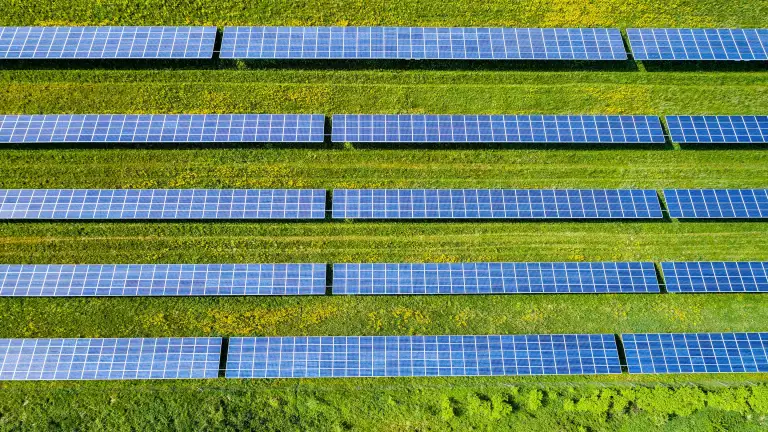Transforming an Energy Retailer to Thrive in the Energy Transition
Discover how BCG helped Ergon Retail, an Australian utility, transform its business to improve employee engagement, boost customer happiness, and thrive in the energy transition.

脱炭素・低炭素社会の構築に必要なガス・電気のネットワークと生成・発電を開発することにより、電力・エネルギー供給事業会社はエネルギー移行の最前線に立っています。BCGのコンサルティングチームは、企業が自信を持って未来に対応できるようにします。
電力・エネルギー供給事業領域での活動は、これまで以上に困難で、かつ重要なものとなっています。現代のエネルギー供給事業者は、再生可能エネルギーの普及を促進し、顧客側のシステムに対応し、デジタル技術を駆使し、気候変動に対応する一方で、規制上の義務を果たさなければなりません。BCGのガス・電力コンサルティングチームは、これらの課題や、将来起こりうるその他の課題に対して、解決策を見出すお手伝いをしています。
BCGでは、深い商業的・技術的・規制上の専門知識を活用して、幅広い企業を支援し、規制対象および非規制対象の電力・ガス企業を対象に、送配電、発電、小売事業に関するアドバイスを世界中で提供しています。
私たちの電力・エネルギー供給事業コンサルティングチームは、企業が戦略的な方向性を定め、ネットゼロ(温室効果ガス排出ゼロ)を目指す道筋を推進する支援を行っています。戦略策定の助言に加え、柔軟性管理などの新たな能力構築や、サプライチェーンが制約された環境での大規模な資本プロジェクトの実現といった困難な運用上の課題解決を支援しています。また、市場設計や規制見直しに関する政府や規制当局との連携もサポートしています。
Discover how BCG helped Ergon Retail, an Australian utility, transform its business to improve employee engagement, boost customer happiness, and thrive in the energy transition.
BCG helped E.ON reshape its core business into a powerful tool capable of addressing the challenges facing the power and utilities industry, such as how to mitigate climate change.
The Rotterdam-based energy company aims for carbon neutrality by 2035. Learn about their “One Planet” plan—and why it’s so important to act now on climate change.

この包括的なソリューションは、AIを活用してメンテナンス戦略を改善し、作業指示の優先順位を付け、機器の故障を予測することで、電力・エネルギー供給事業における資産管理を強化するものです。リスクに基づく意思決定、インテリジェントなスケジューリング、モバイルアプリを活用した円滑な実行を含み、手作業を削減します。このアプローチは予知保全の枠を超え、資産管理プロセス全体で効率性と信頼性を最適化します。

AIを活用した「Deep Customer Engagement AI」は、最適なタイミングで最適なチャネルを通じて、最も効果的な営業アクションを提供することで、電力・エネルギー供給事業者の顧客管理を最適化します。このソリューションにより、新規顧客の獲得や解約率の低減が可能となるだけでなく、1顧客あたりの価値向上にも寄与します。

BCGのデジタルツールを一つに集約した「Networks.AI」は、送配電ネットワークの計画、資産管理センターや投資の優先順位付け、現場作業の効率向上、さらには顧客サポートや管理の改善など、幅広い電力網関連の課題に大規模に対応できるプラットフォームです。さらに、最適なツールを選択することで、迅速にビジネス成果を創出するサポートも提供します。

BCG’s Rebecca Fitz discusses how the energy sector’s top performers are creating value by selectively pursuing deals that strategically align with their portfolio and capital objectives.

Achieving net zero will require driving an energy transition with unprecedented speed. That transition promises to have far-reaching implications.

Geopolitical uncertainty and market volatility are pressing concerns for business leaders. But with the future of the planet at stake, climate action must remain a top priority.

Forward-looking players are changing the way they purchase renewable power. Other companies should follow their lead.
BCGの電力・エネルギー供給事業のエキスパートは、電力ネットワークと送配電の両方における深い専門知識を活かし、クライアントが今日のエネルギー業界の事業環境に適応し、成功を収めるための支援を提供します。電力・エネルギー供給事業のエキスパートをご紹介します。